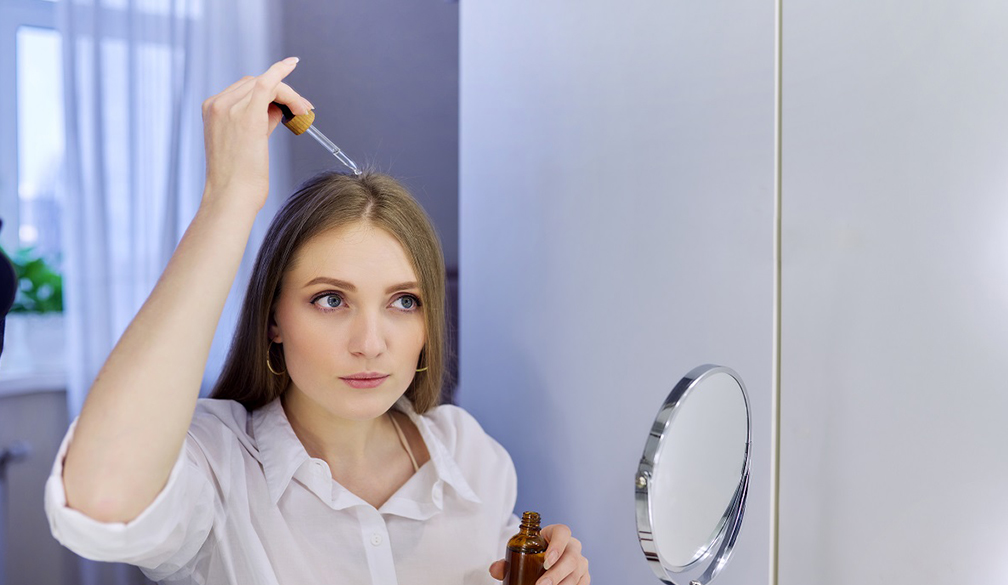Scalp Micropigmentation (SMP) After-care: Ensuring Long-Lasting Results and Optimal Healing

Just like any other cosmetic procedure, proper Scalp Micropigmentation (SMP) after-care is crucial to achieving natural-looking and long-lasting results.
Scalp Micropigmentation is a groundbreaking solution, but without caring for and protecting your investment, you may end up getting undesirable results.
Many people follow after-care instructions during the initial healing phase when discomfort is at its peak. However, they neglect the guidelines once the discomfort subsides, and this is where they go wrong.
The full healing process extends beyond the initial days or weeks, and proper after-care remains essential throughout this period. Neglecting can lead to premature fading, uneven pigmentation and even infections.
If you plan on having a hair SMP, it is important to understand essential after-care steps for proper healing and long-lasting results. Continue reading this article to know the role of after-care in SMP success.
After Care SMP Guidelines - A Complete Guide
Things to Consider After SMP Procedure
Care Routine
1. Immediate After-Care Instructions
Following your SMP treatment, you must keep your scalp clean. But by all means, avoid getting your scalp wet.
There are several ways you can keep your scalp clean without making it wet. One great example is using a damp cloth to dab your scalp area gently. Additionally, drink plenty of water and fluids during the first five days but avoid vigorous exercises at all costs. Sweating will only cause infections which may interfere with the healing process.
2. Proper Skin Care Routine
After the first five days, you need to keep your scalp moisturised, or you will start scratching and picking, which may irritate you. To moisturise your scalp, use a mild shampoo and lukewarm water and wash your scalp gently without scrubbing.
Also, ensure you use a shampoo that is designed for sensitive scalp. Shampoos with harsh chemicals like sulphates, parabens and fragrances can irritate the scalp and cause premature fading.
3. Managing Discomfort and Sensitivity
It’s normal to experience discomfort after undergoing SMP treatment. However, some ways can help minimise and reduce sensitivity -
- Avoid touching or scratching your scalp: Scratching or picking your scalp can irritate and cause infection to the scalp.
- Apply recommended soothing creams and moisturisers: Apply soothing creams recommended by your practitioner to relieve discomfort. For moisturisers, use all-natural products.
- Wear a soft hat or use a gentle pillowcase: It helps provide added protection and comfort during the healing process.
4. Protecting the SMP From External Factors
If you want long-lasting scalp micropigmentation results, protecting your scalp from external factors is one important rule you should follow. The sun, in particular, poses the most significant threat. The UV rays can fade the pigments and damage the treated area. Always wear a hat or sunscreen with 30 to 50 SPF to maintain the SMP.
5. Avoid Water Exposure
The last thing you want to do after hair micropigmentation is to make your scalp wet as it can cause infection and premature fading. Keeping the scalp dry allows pigmented dots to settle correctly. So avoid swimming, going to saunas or having steam baths during the initial phase of healing.
After the healing process is complete, you can resume your regular shower routine but minimise exposure to chlorinated and salty water to preserve colour and longevity.
6. Long-term Scalp Care
After 30 days, you can swim and visit saunas or tanning booths. However, it is essential to moisturise your scalp daily and apply sunscreen if you spend most of your time in the sun. Additionally, ensure that your scalp doesn’t shine. Lastly, follow up with your SMP practitioner for additional touch-ups or adjustments.
Potential Side Effects and Complications
- Redness and Irritation: You may experience temporary redness and mild irritation after the treatment, but this typically subsides within a few days.- Allergic Reactions: Although very uncommon, a person might be allergic to the pigments used in SMP, leading to itching, swelling, or rash.
- Infection: Neglecting after-care can result in infection in the treated area.
- Fading or Color Change: The pigment may fade or change colour due to exposure to UV light or other environmental factors.
Healing Timeline and Expectations
Normally, it takes two to four weeks for your scalp to heal. However, every person’s healing and recovery process may differ. Some may take 2 weeks to heal, but others may experience minor complications after the procedure. Regardless, following the after-care guidelines provided by your practitioner ensures you get the desired results.
Combining SMP With Other Hair Treatments
A combination of transplant and SMP treatment is highly recommended for anyone who has had a hair transplant procedure and still has difficulty achieving more denser hair. With this combination of hair loss treatment, individuals solve even the most common issue-receding hairline.
Conclusion
Scalp micropigmentation can yield desirable results only if you follow the necessary steps. With these after-care guidelines at your fingertips, you can achieve more natural-looking results. Alternatively, you can consult your skilled practitioner for further guidance.
